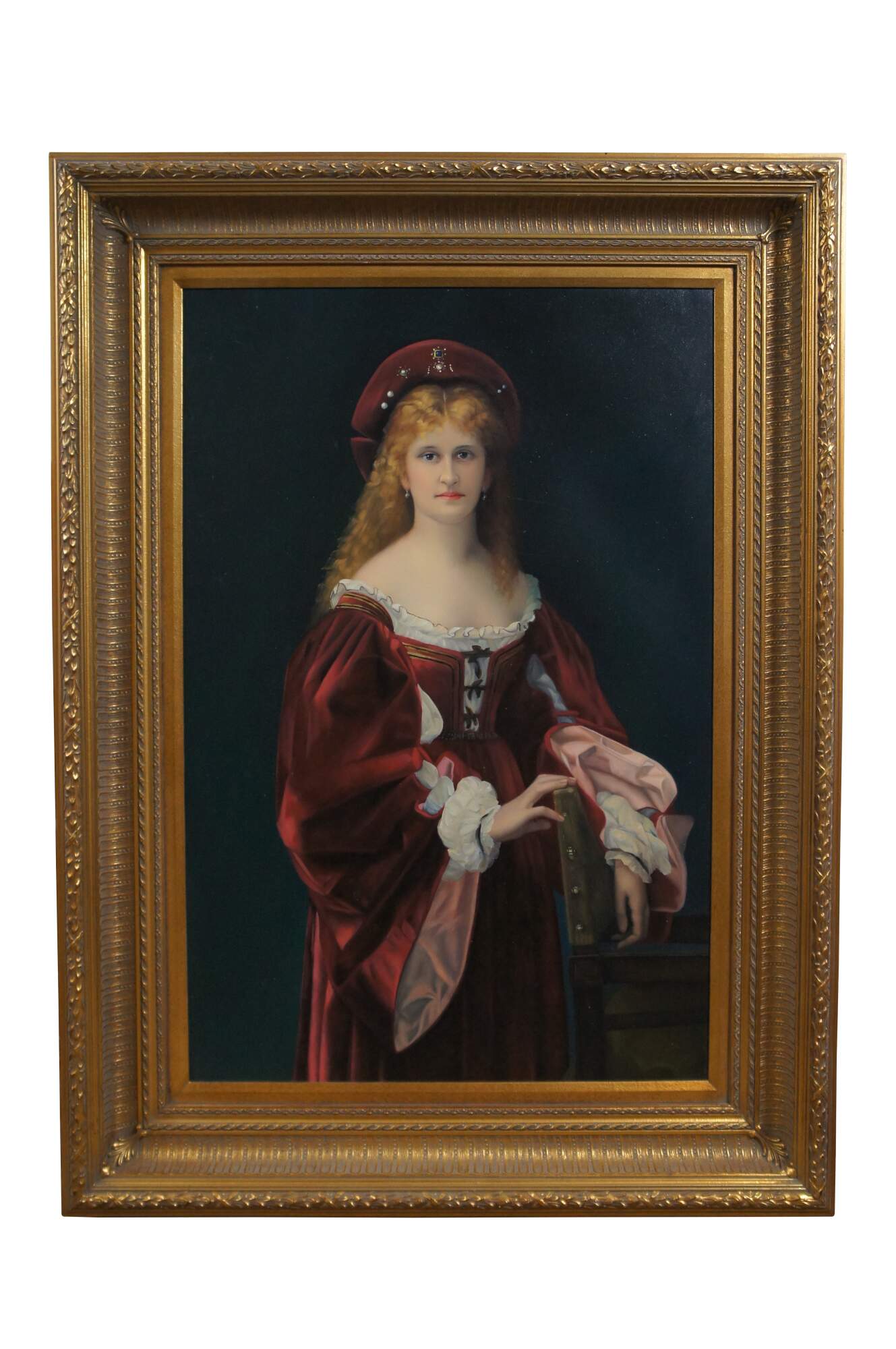
Shipping:
Free Shipping Included
Delivery:
Estimated 2-15 Business Days
Payments:
Credit Card, Check, Cash, PayPal, Apple Pay, Venmo
Returns:
30 Days 100% Money Back Guarantee, Buyer Pays Return Shipping
Description
Very large and impressive hand painted reproduction oil portrait painting on canvas after “Patricienne de Venise” (Patrician of Venice) originally painted in 1881 by Alexandre Cabanel, showing a woman with long red hair in an elegant red Elizabethan gown, standing next to a chair. Displayed in a carved and beveled gilded frame.
“Alexandre Cabanel (1823-1889) born in Montpellier, France on September 28, 1823, was a tremendously popular painter who personified official academic art at the top of the Salon hierarchy and with his contemporary Bouguereau stood as the antithesis of progressive movements, including impressionism. Alexandre entered drawing school as a boy and continued at the Ecole des Beaux-Arts in 1840 under Picot. Soon after his debut at the Salon, he won the Second Prix de Rome (1845) with Christ in the Praetorium, a rather neo-Baroque crowd scene. In Rome he painted Albaydé (Musée Fabre, Montpellier), a kind of Neo-Greek femme fatale. In 1855, he exhibited The Glorification of St Louis, which D. Cady Eaton later called pretentious. His Birth of Venus (Musée d'Orsay), inspired by Ingres' Odalisque with a Slave (Fogg Art Museum), caused such a sensation in the controversial Salon of 1863 — the year of the Salon des Refusés — that Napoleon III purchased the painting and Cabanel received the Légion d'Honneur, as well as election to the Institut de France.
Once established in the framework of the official art community of Paris, Cabanel was appointed, along with Gérôme, to a professorship in the Ecole des Beaux-Arts, formerly an arm of the Institut. Cabanel painted history, genre, and religious subjects, all of which were executed with the meticulous finish typical of the prevailing Salon masters. He contributed murals to the series in the Panthéon (Life of St. Louis). Zola and other early defenders of impressionism referred to his work as uninspired and insipid but most critics praised his compositions, though by 1904, Pattison frowned upon the idea that Cabanel "produced languid imitations of . . . imitations," referring to his model Ingres, who in turn, had closely followed his idol, Raphael.
As a teacher, Cabanel did not insist on indoctrinating pupils and he inspired numerous young painters who eventually became influential. Weinberg (1991, p. 131) mentions how American students "could anticipate Salon acceptance through their affiliation with him." Perhaps his most famous student was Bastien-Lepage. Tonalist landscape painter Birge Harrison (1890, p. 755) related how Cabanel condemned Bastien-Lepage's Joan of Arc (now in the Metropolitan Museum). Cabanel's American students included Augustus George Heaton, Henry Bacon, Edgar Melville Ward, Frederic Crowninshield, and Thomas Hovenden. Alexandre Cabanel died in Paris on January 23, 1889 at the age of sixty-six. Although American collectors preferred Bouguereau's works to those of Cabanel, the latter received many portrait commissions from Americans and Samuel Hawk purchased one of his historical genre pieces.”
Condition
Very Good
Dimensions
34.5" x 3" x 46.5" / Sans Frame - 23.5" x 35.5" (Width x Depth x Height)